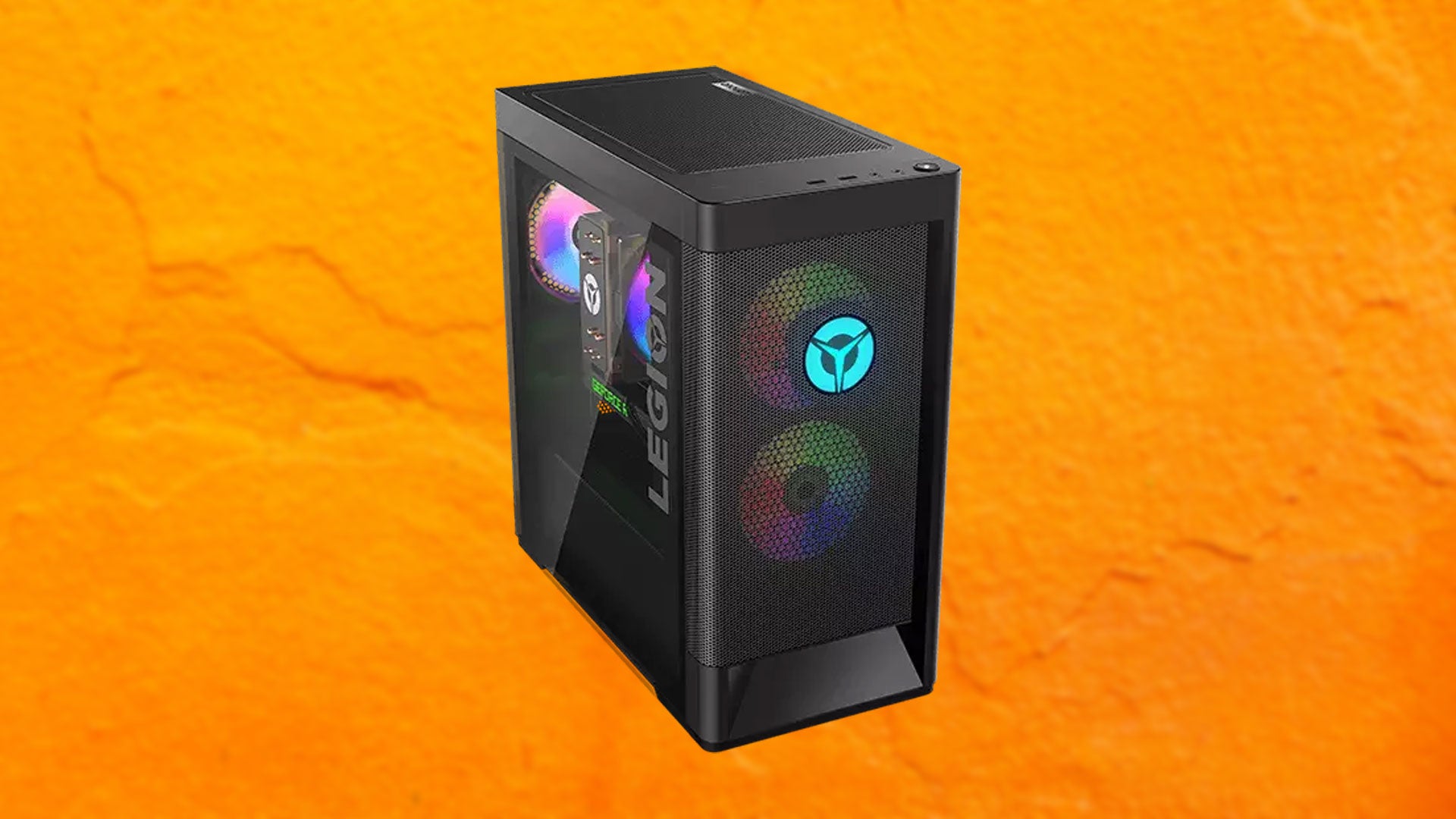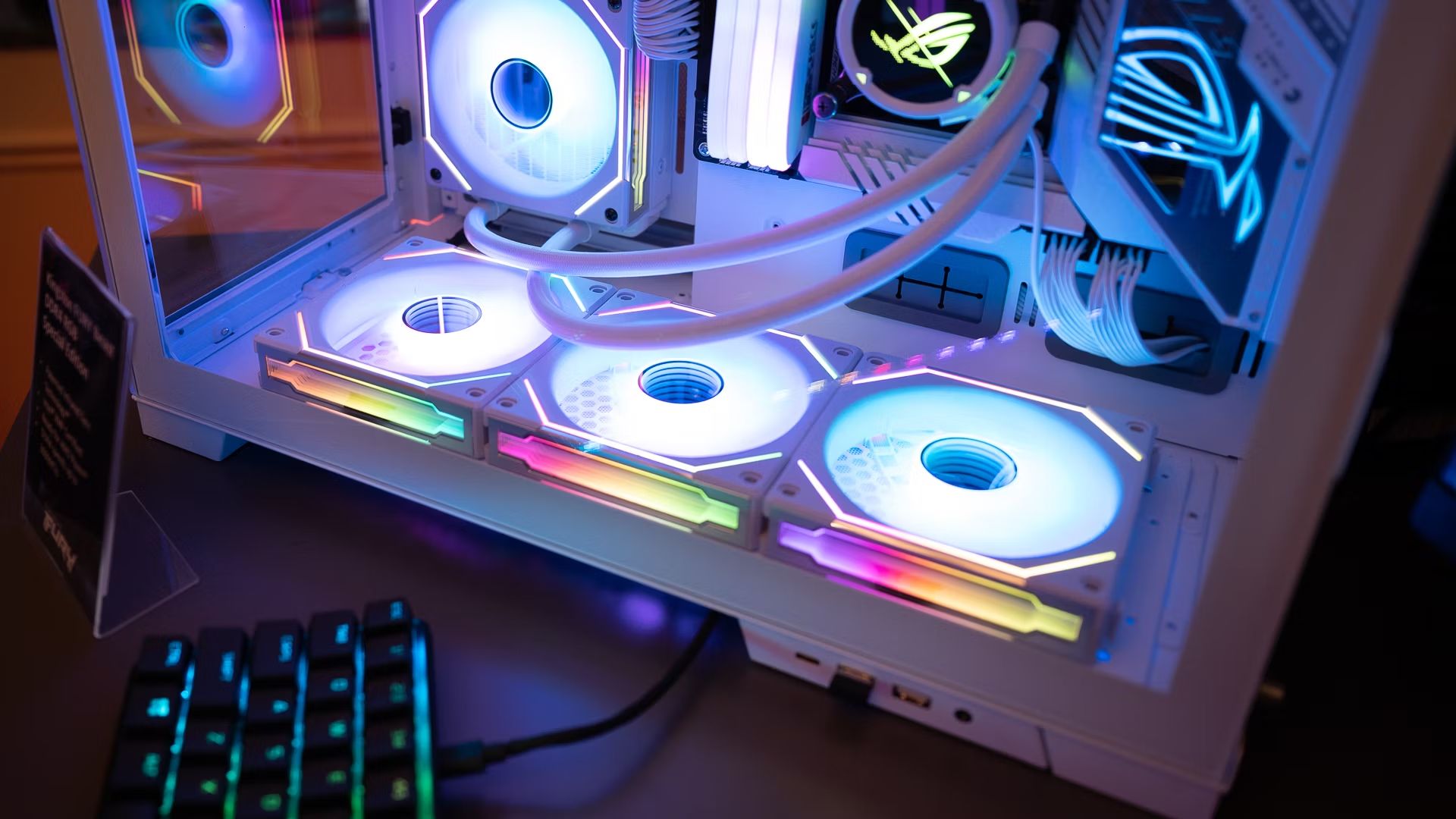Introduction
A good PC is an essential tool for many people in today’s digital age. Whether you’re a student, a professional, or a gaming enthusiast, having a reliable computer can significantly impact your productivity, entertainment, and overall computing experience. However, one of the most common questions when it comes to purchasing a new PC is, “How much does a good PC cost?”
The cost of a PC can vary significantly depending on various factors such as the specifications, brand, pre-built or custom-built, and intended usage. It’s important to understand these factors and their impact on the final price before making a decision.
In this article, we will explore different categories of PCs and their associated costs, ranging from budget-friendly options to high-end machines. We’ll also discuss the advantages and considerations of pre-built versus custom-built PCs. By the end of this article, you’ll have a better understanding of how much you can expect to invest in a good PC that aligns with your needs and preferences.
Keep in mind that the information provided in this article is general, and prices may vary depending on your location and the availability of certain components or models. It’s always a good idea to do thorough research and compare prices from various sources to ensure you’re getting the best value for your money.
Factors Affecting the Cost of a PC
When it comes to determining the cost of a PC, there are several key factors that can significantly impact the final price. Understanding these factors will help you make an informed decision based on your budget and requirements. Let’s take a closer look at the main factors that affect the cost of a PC.
- Specifications: The specifications of a PC, such as the processor, RAM, storage capacity, and graphics card, play a crucial role in determining its performance and price. PCs with higher-end components will typically come at a higher cost.
- Brand: The choice of brand can also impact the cost. Well-established and reputable brands often charge a premium for their products due to the quality, customer support, and brand recognition they offer.
- Pre-built or Custom-built: Pre-built PCs, which come pre-assembled and ready to use, are typically more convenient but may come at a higher price compared to custom-built PCs. Custom-built PCs allow you to select specific components according to your needs and budget.
- Intended Usage: The purpose for which you’ll be using the PC can also affect the cost. For example, if you’re primarily using it for basic tasks like web browsing and word processing, a lower-end PC may suffice. However, if you’re into gaming, graphic design, or video editing, you’ll likely require a more powerful and expensive PC.
- Operating System and Software: The choice of operating system and additional software can impact the cost. Windows-based PCs usually come at a higher cost compared to those running on Linux or Chrome OS. Additionally, certain software programs may require higher specifications, which can raise the overall cost.
It’s important to carefully consider these factors and prioritize your requirements when determining your budget for a PC. While it can be tempting to go for the latest and most powerful components, it’s essential to strike a balance between performance and cost. Evaluating your needs and allocating your budget accordingly will help you get the best value for your money.
Budget PCs
For those on a tight budget, there are budget-friendly PC options available that can meet basic computing needs without breaking the bank. Budget PCs are designed to provide decent performance for everyday tasks such as web browsing, email, word processing, and multimedia consumption. These computers are usually pre-built and come with lower-end specifications, which helps to keep the cost down.
Typically, budget PCs feature entry-level processors, around 4-8GB of RAM, and modest storage capacities. The graphics capabilities of these PCs may be integrated within the processor or rely on low-end dedicated graphics cards. While they may not be suitable for resource-intensive activities like gaming or video editing, they are perfectly capable of handling day-to-day tasks efficiently.
When opting for a budget PC, it’s important to carefully evaluate your needs and expectations. Consider the specific tasks you’ll be using the PC for and choose a system that meets those requirements. It’s also worth noting that budget PCs often come with limited upgradability options, so if you foresee the need for future hardware upgrades, you may need to consider a more flexible custom-built system.
In terms of pricing, budget PCs typically range between $300 to $700, depending on the brand, specifications, and any additional features included. It’s recommended to compare prices from different retailers and consider any ongoing deals or promotions to get the best possible value.
While budget PCs may not offer the same level of performance and features as higher-end options, they can be a practical and cost-effective solution for individuals who primarily use their computers for basic tasks and don’t require top-of-the-line specifications.
Mid-range PCs
Mid-range PCs strike a balance between affordability and performance, making them a popular choice for a wide range of users. These computers offer a significant step up in terms of specifications compared to budget PCs, making them suitable for more demanding tasks such as photo and video editing, casual gaming, and multitasking.
Mid-range PCs typically feature more powerful processors, ranging from Intel Core i5 to AMD Ryzen 5, with faster clock speeds and higher core counts. They also offer larger amounts of RAM, usually between 8-16GB, which allows for smoother multitasking and better performance with resource-intensive applications. Additionally, mid-range PCs tend to come with dedicated graphics cards that offer better gaming performance and support for graphics-intensive tasks.
In terms of storage, mid-range PCs often include a combination of a solid-state drive (SSD) and a traditional hard disk drive (HDD). This combination offers the best of both worlds, with fast boot-up times and quick access to frequently used files and applications, as well as ample storage space for multimedia files and larger applications.
The price range for mid-range PCs can vary depending on the brand, specifications, and additional features. Typically, you can expect to spend between $700 to $1,500 for a mid-range PC. It’s worth noting that prices may increase if you opt for higher-end components or if you choose to customize your PC.
Mid-range PCs are suitable for individuals who require more power and performance than what a budget PC can provide but don’t necessarily need top-of-the-line specifications. They offer a great balance between price and performance and can cater to the needs of most users, including gamers, content creators, and professionals.
High-end PCs
High-end PCs are the pinnacle of computing power and performance, designed to handle the most demanding tasks with ease. These machines are ideal for professional content creators, gamers who want to experience the latest games at their best settings, and those who require exceptional processing power for complex simulations or virtual reality applications.
High-end PCs come equipped with cutting-edge components that deliver top-tier performance. They feature powerful processors like Intel Core i7 or i9 and AMD Ryzen 7 or 9, which offer high clock speeds and multiple cores for seamless multitasking. These PCs also boast generous amounts of RAM, usually starting from 16GB and going all the way up to 32GB or more, allowing for smooth operation of resource-intensive applications.
Graphics performance is a key aspect of high-end PCs, and they often come with high-end graphics cards from NVIDIA or AMD, such as the GeForce RTX or Radeon RX series. These graphics cards offer exceptional rendering capabilities, advanced ray tracing technology, and high frame rates, making them suitable for ultra-high-definition gaming and professional-grade graphics work.
In terms of storage, high-end PCs often feature super-fast solid-state drives (SSDs) with large capacities, providing lightning-fast boot times and quick access to files. They may also include additional storage options such as HDDs or high-speed NVMe drives for expanded storage space.
Considering the advanced components and cutting-edge technology, high-end PCs have a higher price tag. Prices for high-end PCs typically start from $1,500 and can easily reach several thousand dollars, depending on the customization options and premium features chosen.
High-end PCs are designed for users who require the absolute best performance and are willing to invest in top-of-the-line components. They deliver unrivaled power and speed, making them the go-to choice for professional gamers, content creators, and those who demand nothing but the best from their computer.
Custom-built PCs
Custom-built PCs offer a unique advantage over pre-built systems as they provide the freedom to choose specific components according to your needs and preferences. This level of customization allows you to create a PC that perfectly aligns with your requirements and ensures optimal performance for your specific use cases.
When building a custom PC, you have the flexibility to select the exact processor, RAM, graphics card, storage devices, and other components based on your budget and performance goals. This means you can prioritize the components that matter most to you and allocate your budget accordingly.
One of the key advantages of building a custom PC is the ability to future-proof your system. By selecting high-quality components and considering upgradability options, you can easily upgrade specific parts of your PC as technology advances or your needs change. This can save you money in the long run compared to replacing the entire system.
However, there are a few considerations when it comes to custom-built PCs. First, building a custom PC requires some technical knowledge or assistance from someone with experience in PC building. You’ll need to ensure compatibility between the chosen components and make sure everything fits together properly.
Additionally, the cost of a custom-built PC can vary significantly depending on the specific components chosen. While it’s possible to build a budget-friendly custom PC, selecting premium components can quickly drive up the cost. It’s important to set a budget and carefully choose components that strike the right balance between performance and price.
Building a custom PC can be a rewarding experience, providing a sense of ownership and customization that is not possible with pre-built systems. It also allows you to avoid unnecessary bloatware that often comes with pre-built PCs, ensuring a cleaner and more streamlined computing experience.
Overall, custom-built PCs are an excellent choice for those who want complete control over their system’s specifications and performance. With the right components and attention to detail, you can create a PC that is tailored to your specific needs and offers the best possible performance within your budget.
Gaming PCs
Gaming PCs are specifically designed to deliver exceptional performance and visuals, providing an immersive gaming experience for avid gamers. These PCs are equipped with powerful hardware and optimized for running the latest games at high frame rates and resolutions.
One of the key components of a gaming PC is the graphics card. Gaming PCs typically feature high-end graphics cards from NVIDIA or AMD, which provide advanced rendering capabilities and support for real-time ray tracing technology. These graphics cards ensure smooth gameplay, allowing gamers to enjoy stunning visuals and realistic effects.
In addition to the graphics card, gaming PCs often include powerful processors with high clock speeds and multiple cores to handle the demands of modern games. They also feature ample amounts of RAM, usually starting from 16GB and going up to 32GB or more, allowing for seamless multitasking while gaming.
Storage is another important consideration for gaming PCs. These systems often come equipped with solid-state drives (SSDs) for fast boot times and quick game loading. SSDs significantly reduce loading times and provide faster access to game assets, enhancing the overall gaming experience. Additional storage options, such as HDDs, are also commonly included for storing larger game libraries.
When it comes to pricing, gaming PCs can vary widely depending on the brand, specifications, and additional features. Entry-level gaming PCs can start from around $800, while high-end gaming PCs can cost several thousand dollars or more, depending on the customization options and premium features chosen.
Gaming PCs offer the power and performance required for running graphically demanding games at their best settings. They allow gamers to enjoy smoother gameplay, higher frame rates, and enhanced visuals, resulting in a more immersive gaming experience.
Whether you’re a casual gamer or a professional eSports player, a gaming PC can provide the necessary performance and capabilities to enjoy the latest games to their fullest. It’s important to consider your gaming needs, budget, and future upgrade options when selecting a gaming PC to ensure you’re getting the best value for your investment.
Professional Workstation PCs
Professional workstation PCs are specifically designed for demanding workloads and tasks in fields such as architecture, engineering, graphic design, 3D modeling, and video editing. These systems excel in providing the processing power, memory capacity, and storage capabilities required to handle complex projects and resource-intensive applications.
One of the key components of a professional workstation PC is the processor. These systems often feature high-performance processors, such as Intel Xeon or AMD Ryzen Threadripper, which offer multiple cores and high clock speeds, enabling faster rendering, simulation, and data processing.
Professional workstation PCs also include ample amounts of RAM to handle large datasets and memory-intensive applications. It’s not uncommon to find workstation PCs with 32GB or more of RAM, allowing for smooth multitasking and efficient operation of professional software.
In terms of graphics capabilities, professional workstation PCs come equipped with powerful graphics cards that offer optimized performance for professional applications. These graphics cards are specifically designed for tasks like 3D modeling, rendering, and simulation, providing accurate and real-time visualization of complex projects.
Storage options for workstation PCs often include fast solid-state drives (SSDs) for quick access to project files and applications. Additionally, these systems may offer larger storage capacities with multiple hard disk drives (HDDs) or even network-attached storage (NAS) for storing large amounts of data securely.
Due to their specialized components and high-performance capabilities, professional workstation PCs tend to have a higher price range. Prices can start from around $1,500 and can go well beyond $5,000 or more, depending on the customization options, specifications, and professional software requirements.
Professional workstation PCs are designed to deliver the reliability, performance, and stability needed for professional work. These systems provide the necessary computational power and resources to handle intricate projects and run specialized software, allowing professionals to work efficiently and effectively.
Whether you’re an architect, engineer, designer, or content creator, investing in a professional workstation PC can significantly enhance your productivity and enable you to tackle complex tasks with ease. It’s important to assess your specific workflow requirements, software compatibility, and budget when selecting a professional workstation PC to ensure it aligns with your professional needs.
Additional Costs to Consider
When budgeting for a PC, it’s important to take into account additional costs beyond the base price of the system. These costs can vary depending on your specific requirements and usage. Here are some additional costs to consider when purchasing a PC:
- Peripherals: Peripherals such as monitors, keyboards, mice, and speakers may need to be purchased separately. The cost of these peripherals can vary based on the brand, features, and quality.
- Software: Consider the cost of software applications you may need for your specific tasks, such as productivity suites, design software, or gaming software. Some software may be available as a one-time purchase, while others require a subscription.
- Upgrades and Expansion: If you plan to upgrade your PC in the future, budget for the cost of additional RAM, storage, or graphics cards. It’s important to choose a PC that has room for expansion and supports future upgrades.
- Warranty and Support: Some PCs come with a standard warranty, while others offer extended warranties or additional support packages for an extra cost. It’s worth considering if you want the added security and peace of mind that comes with extended warranty coverage.
- Shipping and Taxes: When purchasing a PC online or from a retailer, shipping costs may apply depending on your location. Additionally, take into account any applicable taxes or import duties that may be added to the final price.
It’s essential to factor in these additional costs when setting your budget for a PC to ensure you’re prepared and have a clear understanding of the total investment required. Conduct thorough research, compare prices, and consider the long-term costs associated with peripherals, software, and potential upgrades.
By planning ahead and considering these additional costs, you can make an informed decision and avoid any surprises in your overall budget for a PC.
Conclusion
When it comes to purchasing a PC, understanding the factors that affect the cost and considering your specific needs and budget are crucial. Whether you’re looking for a budget-friendly option, a mid-range PC, or a high-end gaming or professional workstation PC, there are a variety of choices available to suit your requirements.
By evaluating the specifications, brand, pre-built or custom-built options, and intended usage, you can determine the right PC for you. Consider the additional costs such as peripherals, software, upgrades, and warranties to ensure you have a comprehensive view of the total investment.
It’s important to conduct thorough research, compare prices, and prioritize your needs to make an informed decision. While price is a significant factor, it should not be the sole determining factor. Finding a balance between performance, quality, and budget will ensure that you get the most value from your PC purchase.
Remember, technology advances rapidly, and your PC requirements may change over time. Investing in a PC that allows for future upgrades and expansion can help you extend the lifespan of your system and ensure it continues to meet your evolving needs.
Whether you’re using your PC for basic tasks, gaming, or professional work, a good PC can greatly enhance your productivity, entertainment, and overall computing experience. By carefully considering your needs, preferences, and budget, you can find a PC that delivers the right balance between performance, features, and affordability.
Before making a final decision, take the time to read reviews, compare specifications, and seek advice from experts or experienced users. This will ultimately help you make an informed and satisfying choice that aligns perfectly with your computing needs.

























